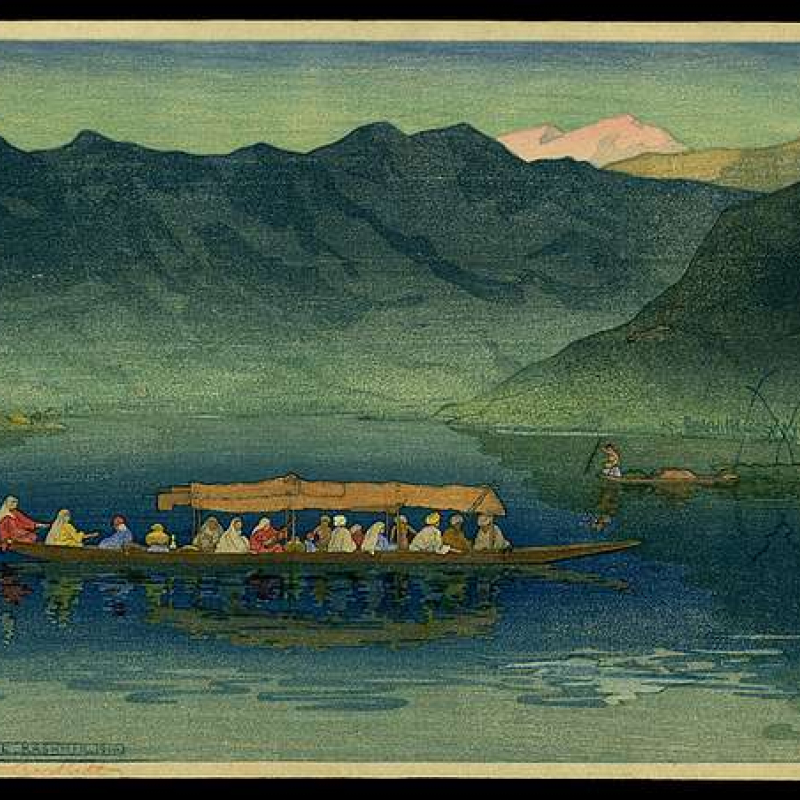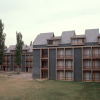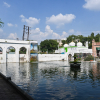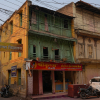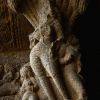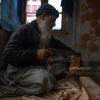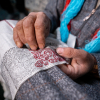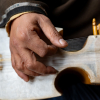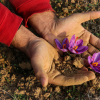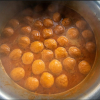The Dal Lake is an iconic feature of Kashmir, deeply interwoven into the tapestry of Srinagar’s history and culture. The city itself was built around the Dal, which continues to be a defining aspect of its identity. Historical references such as Kalhana’s Rajtarangini (twelfth century) identify the lake as ‘Mahasarit’. Mirroring the grandeur of the Himalayas in its waters, the lake has the power to captivate even the most sceptical visitors. Its timeless beauty has inspired poetry, art and cinema for centuries. Who can forget Shammi Kapoor serenading Sharmila Tagore on a shikara (traditional wooden boats) in Kashmir ki Kali (1964)?
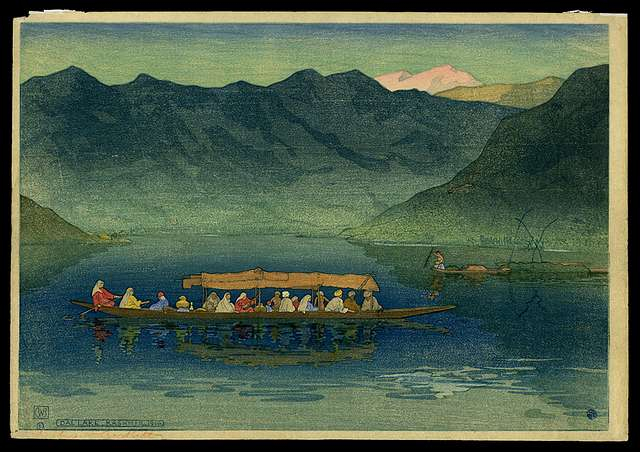
Dal Lake, Kashmir by Charles W. Bartlett, 1916, woodblock print. (Picture Source: GetArchive)
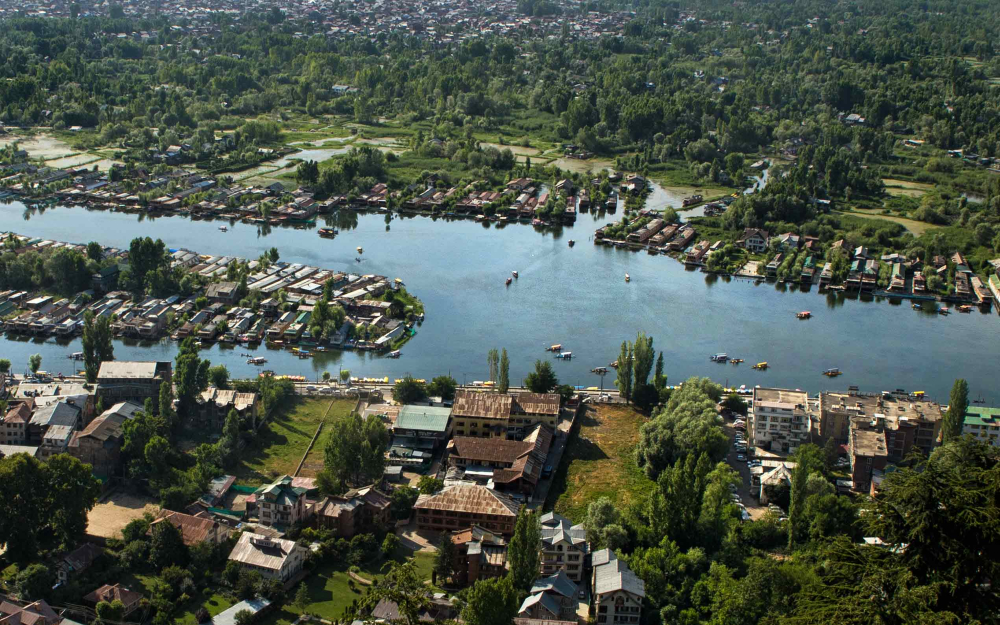
Aerial view of Srinagar’s waterways. (Picture Credits: Sharmistha Dutta)
Often referred to as the jewel of Srinagar, the Dal Lake transcends its role as a natural landmark. Located at the base of the Zabarwan mountain range, this serene blue freshwater lake is an intricate ecosystem of water, vegetation and human habitation. Spanning approximately 18 square kilometers, the lake’s unique features include raadh or rad (floating gardens), wetlands and interlinked water channels. These elements nurture a rich biodiversity, including migratory birds such as Mallard, Rock Pigeon, Eurasian Moorhen, Eurasian Jackdaw, Indian Pond Heron, Eurasian Coot, etc. The surface of the lake is often adorned with aquatic plants, interspersed with blooming lotus flowers and white water lilies. The lake is also famous for its lotus flowers (Nelumbo nucifera) that flourish during July and August. These aquatic plants provide food and shelter to fish and other aquatic creatures. However, while parts of the lake are pristine, others are plagued by green algae, which, despite its visual appeal, degrades water quality and requires regular removal.
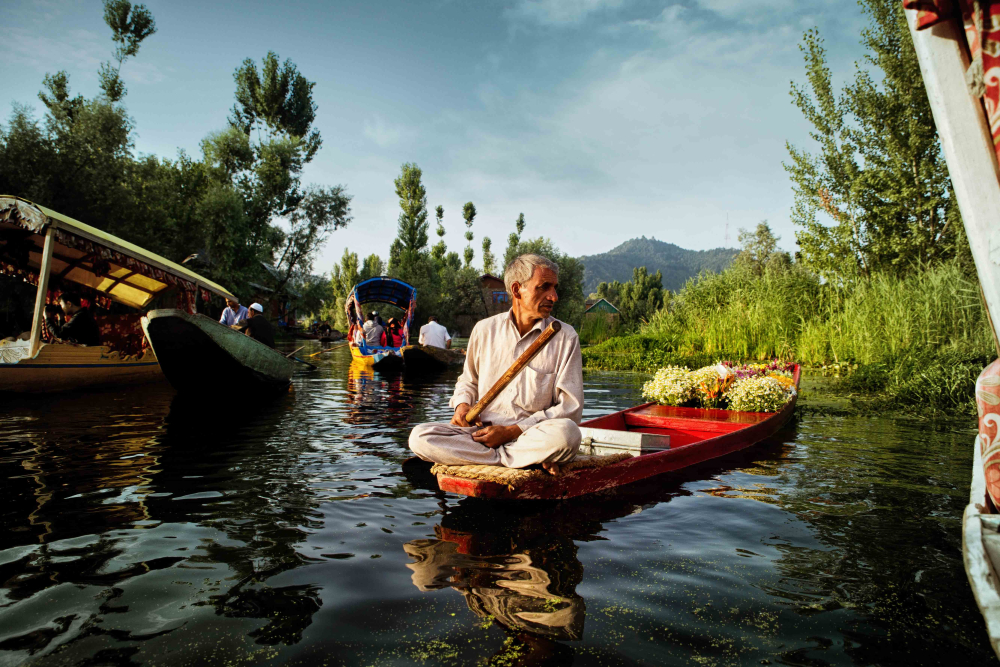
Farmers gather at the floating market with their boats laden with vegetables, flowers and fruits. (Picture Credits: Sharmistha Dutta)
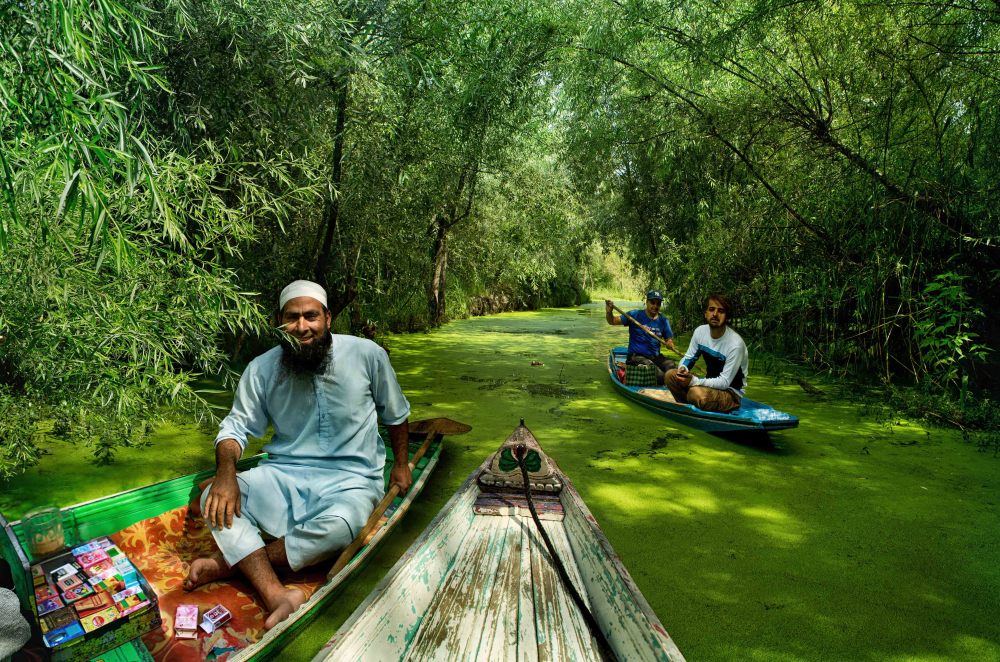
The algae, which resembles a stunning green carpet, might look beautiful, but combined with weeds and lily pads they deplete oxygen levels in the lake. (Picture Credits: Sharmistha Dutta)
Cultural and Economic Lifeline
The communities surrounding Dal Lake have ingeniously developed diverse livelihoods. Tourism remains the primary source of income, especially during summers, yet agriculture, water-produce harvesting, local markets, boat-making and fishing also thrive within this ecosystem. The houseboats, intricately carved with traditional woodwork, cater to visitors from across the globe, while shikaras serve as multipurpose watercraft—used for transportation, fishing and vending goods like saffron, handicrafts and flowers.

Floating markets of Dal Lake. (Picture Credits: Sharmistha Dutta)
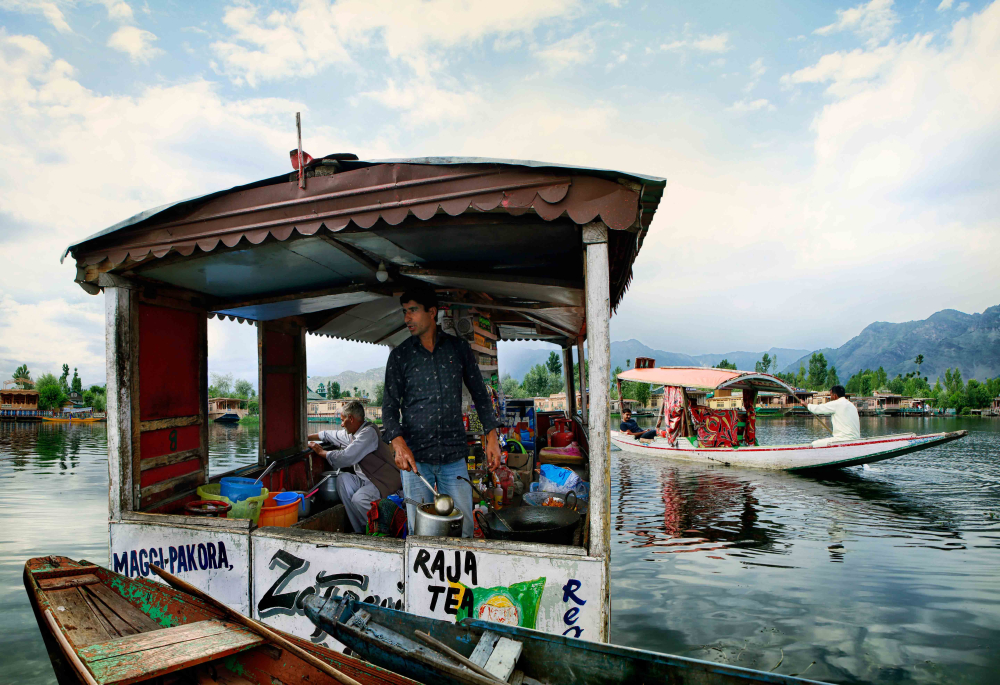
A tea vendor on the Dal Lake in an improvised floating stall. (Picture Credits: Sharmistha Dutta)
The Dal Lake also supports robust agricultural activity, including a rich yield of produce cultivated both within the lake and in its surrounding catchment area. The floating market on the Dal, among the largest in South Asia, epitomises this dynamic interaction between economy and ecology. Operating in the early hours, typically from 5 to 7 am, farmers in shikaras trade vegetables, flowers and fruits, conducting business in Koshur (local Kashmiri dialect). The lake is also home to floating shops that display items ranging from faux designer jackets to traditional Kashmiri shawls and papier-mâché crafts. Adding to its uniqueness, the lake also hosts a floating post office. During the peak tourist seasons of May and June, the floating shops light up in the evenings, with their reflections creating an almost magical ambiance. Life on the waterways of the Dal Lake unfolds at a pace distinct from Srinagar’s urban sprawl, with the surrounding communities deeply attuned to its rhythms. The floating market, a microcosm of Srinagar’s economic vibrancy, offers a picturesque yet functional glimpse into this unique way of life. Farmers in pherans, their shikaras loaded with freshly harvested produce, create a lively scene that draws both locals and tourists.
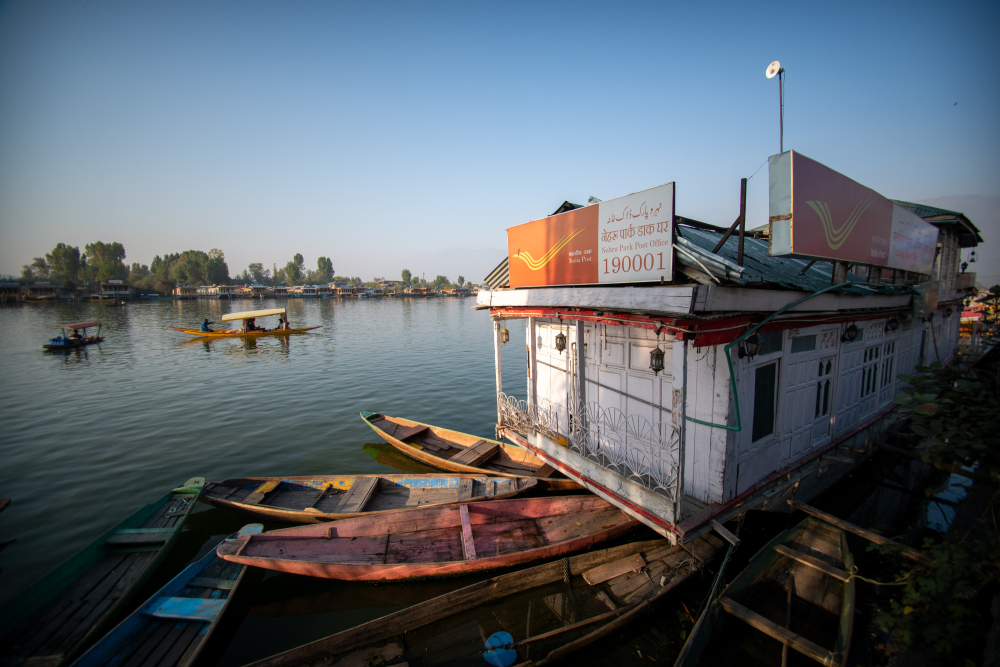
Floating Post Office. (Picture Credits: Syed Muneeb Masoodi)
Fishing remains a cornerstone of the local economy, with traditional methods yielding species such as Schizothorax and trout. The lake also yeilds nadru (lotus stems) and water chestnuts, popular items in Kashmiri cuisine. Although lotus stem cultivation suffered during the 2014 floods, it has since been revived through the efforts of local farmers.
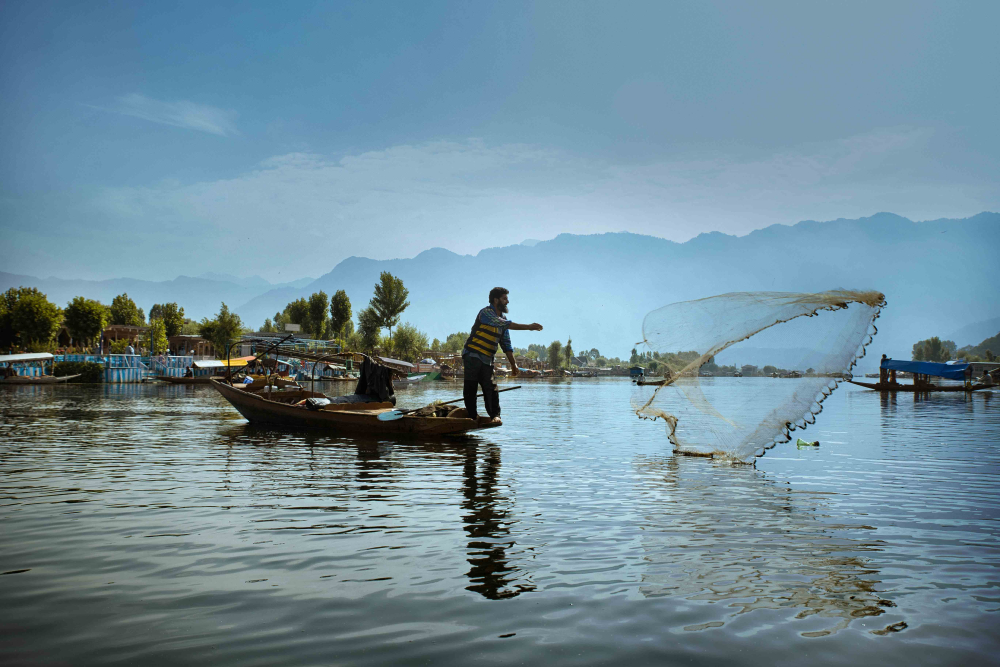
Fishing on Dal. (Picture Credits: Sharmistha Dutta)
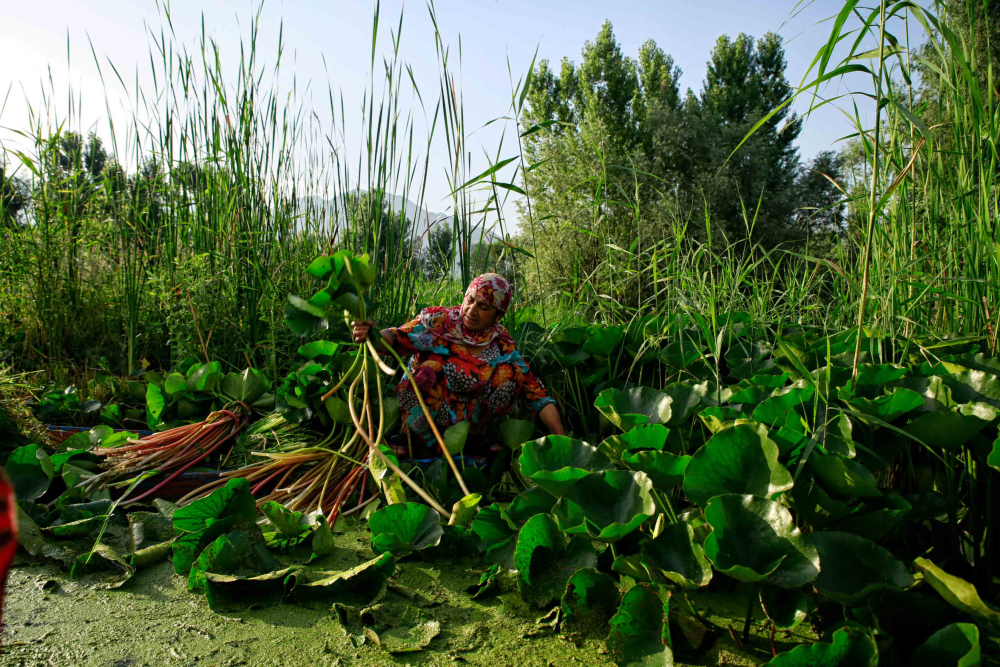
Collecting Nadru. (Picture Credits: Sharmistha Dutta)
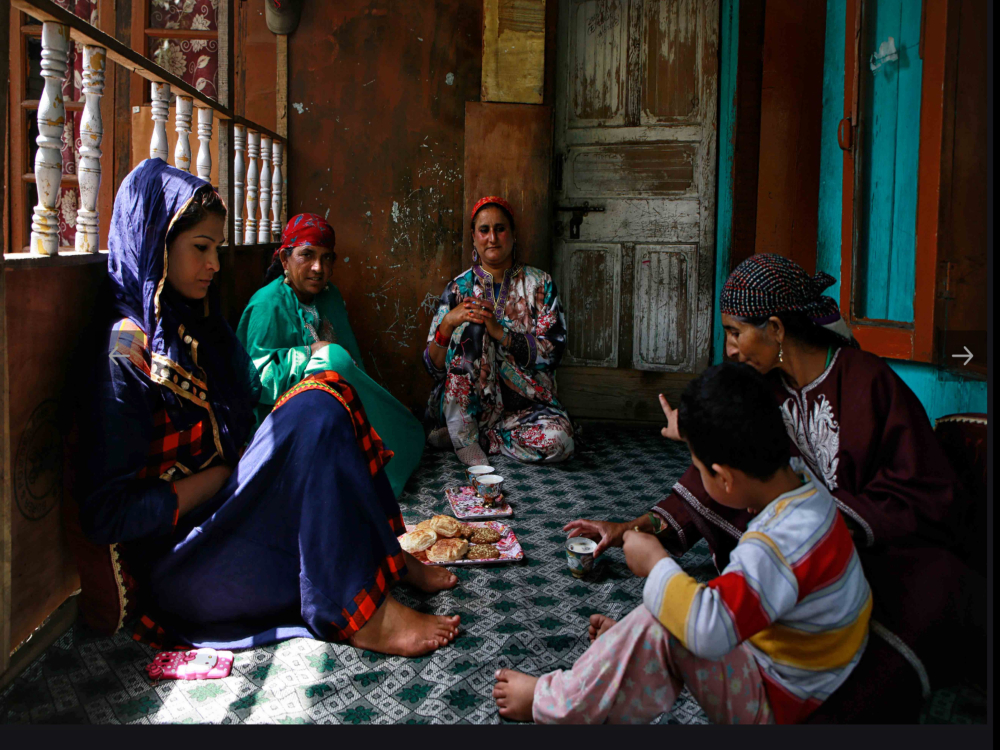
Women balance home and small businesses. (Picture Credits: Sharmistha Dutta)
The intricate network of lakes and canals functions as a system of roads, with almost every household maintaining a personal boat. For children residing in houses along the lake, boats serve as their primary and economical mode of transportation to schools. Similarly, in medical emergencies, doctors and patients rely on boats due to their accessibility, low cost and speed. Many of the bridges spanning the waterways, some dating back to the Mughal era, bear witness to the region’s historical legacy.
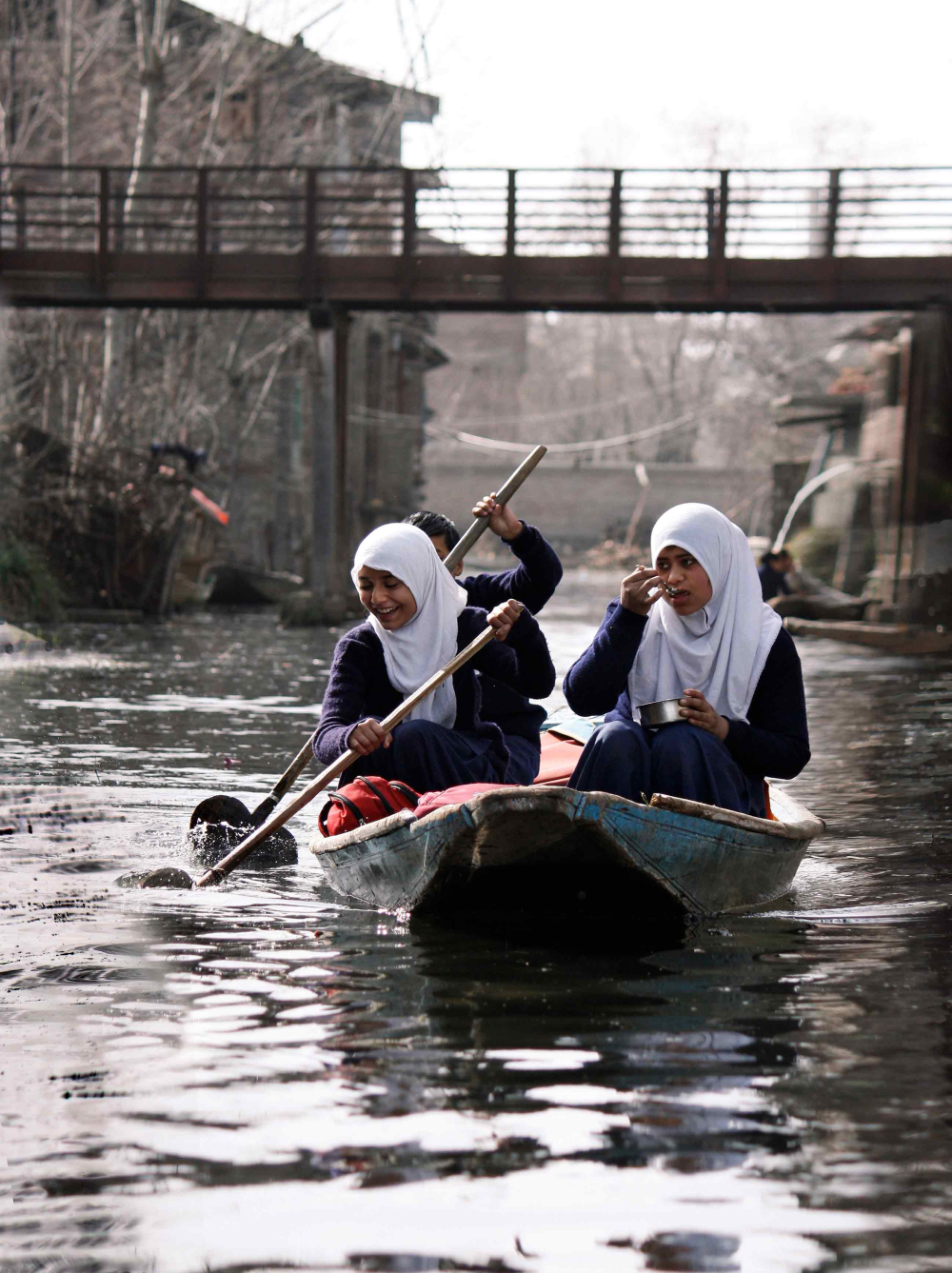
Children going to school. (Picture credits: Sharmistha Dutta)
Houseboats and Shikaras
The houseboats on Dal Lake are synonymous with Srinagar, and staying in one is an essential part of the Srinagar experience. The longest stretch of these iconic floating homes lines Boulevard Road, considered Srinagar’s most prestigious address. Houseboats, typically accessed via complimentary shikara rides provided by their owners, are both homes and means of livelihood for numerous families.
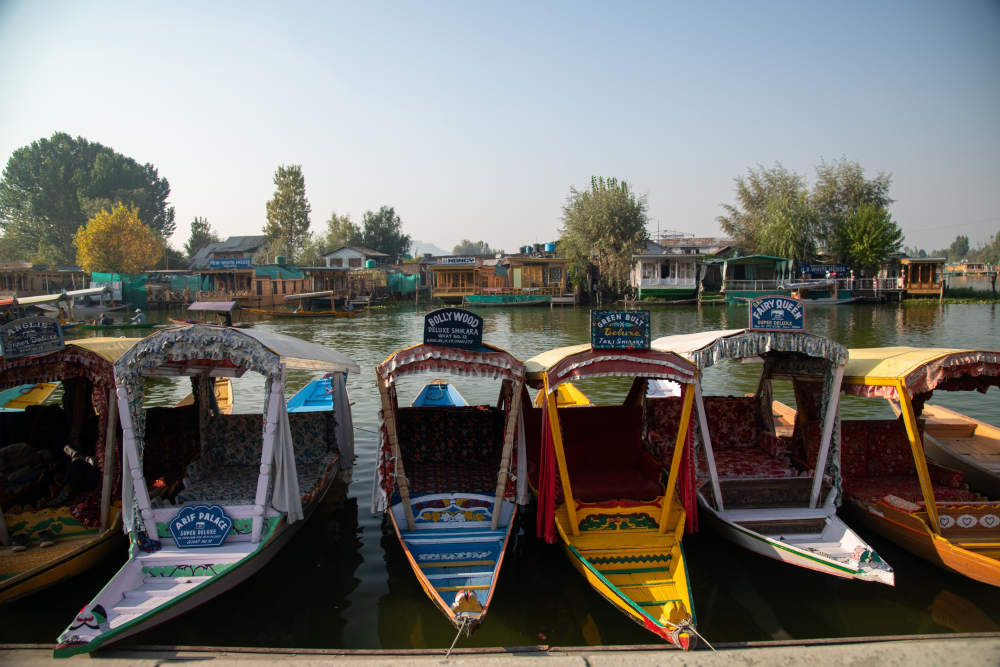
Shikaras on Dal. (Picture Credits: Syed Muneeb Masoodi)
These floating dwellings have an intriguing geopolitical legacy rooted in the British colonial period. British India was suspicious of the looming Russian presence in Central Asia, and the ensuing manoeuvres by both sides resulted in the ‘Great Game’. The Dogra Maharajas of Kashmir were wary of being a pawn in the game. As a result, the British weren’t allowed to buy land in Kashmir. Barred from purchasing land in Kashmir, the British circumvented restrictions by building houseboats on the lake—as there were no restrictions on living on the water. Today, these structures retain a colonial charm, complemented by Kashmiri craftsmanship in woodworking, textiles, papier-mâché and carpets. A typical houseboat features five to six fully furnished rooms, with some even boasting earthen fireplaces for the harsh winters. The owners usually reside in adjoining boats.
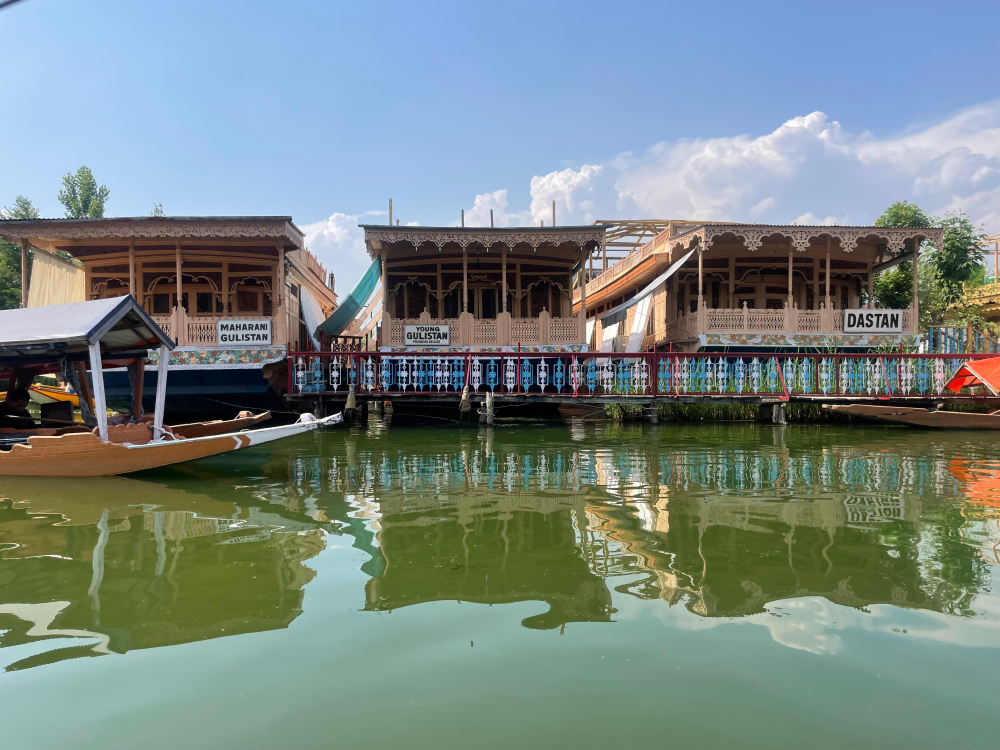
Houseboats and their unique names. (Picture Credits: Stuti Mishra)
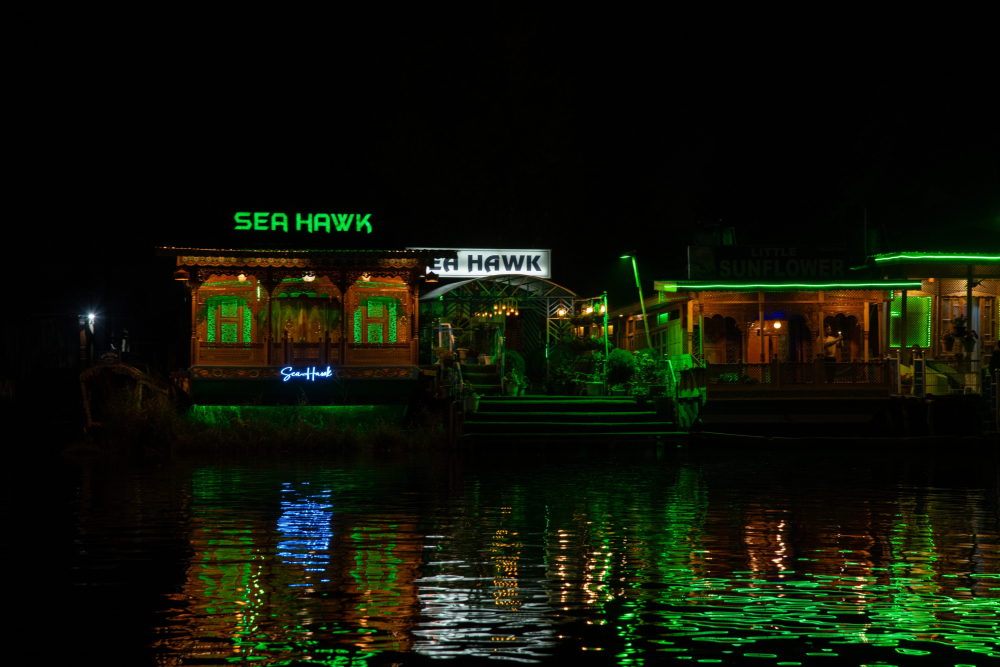
Houseboats illuminating Dal at night. (Picture Credits: Syed Muneeb Masoodi)
An interesting feature of these houseboats is their names. It is believed to have started during colonial times when the people building houses on the lake tried replicating a bit of England in the houseboats. Over time, Kashmiri houseboat owners embraced and adapted this custom, infusing it with local cultural, poetic and spiritual influences. Names like Golden Lily and Snow Palace highlight the region’s natural beauty, while others such as Firdaus (paradise) and Noor Mahal (palace of light) draw from Persian and Urdu poetry. Religious and spiritual names, such as Meherban (gracious) and Karam (blessing), underscore the deeply spiritual fabric of Kashmiri society. Choosing a houseboat’s name is a personal and symbolic act, reflecting both identity and aspiration, while also serving as a marketing tool to attract visitors, making each houseboat a unique part of Dal Lake’s living heritage.
Shikaras are ubiquitous on Dal Lake, functioning as water taxis and multipurpose vessels. Seating up to six passengers, many of these boats feature canopies to shield against the sun. The Shikara Festival, celebrated annually, further showcases the cultural and economic importance of these traditional wooden boats. This vibrant event features boat races, cultural performances and other festivities, drawing locals and tourists alike to celebrate the essence of the Dal Lake. The symbiotic relationship between shikarawallahs and local traders fosters a bustling lake economy, with vendors selling items such as perfumes, jewellery and semi-precious stones to visitors.
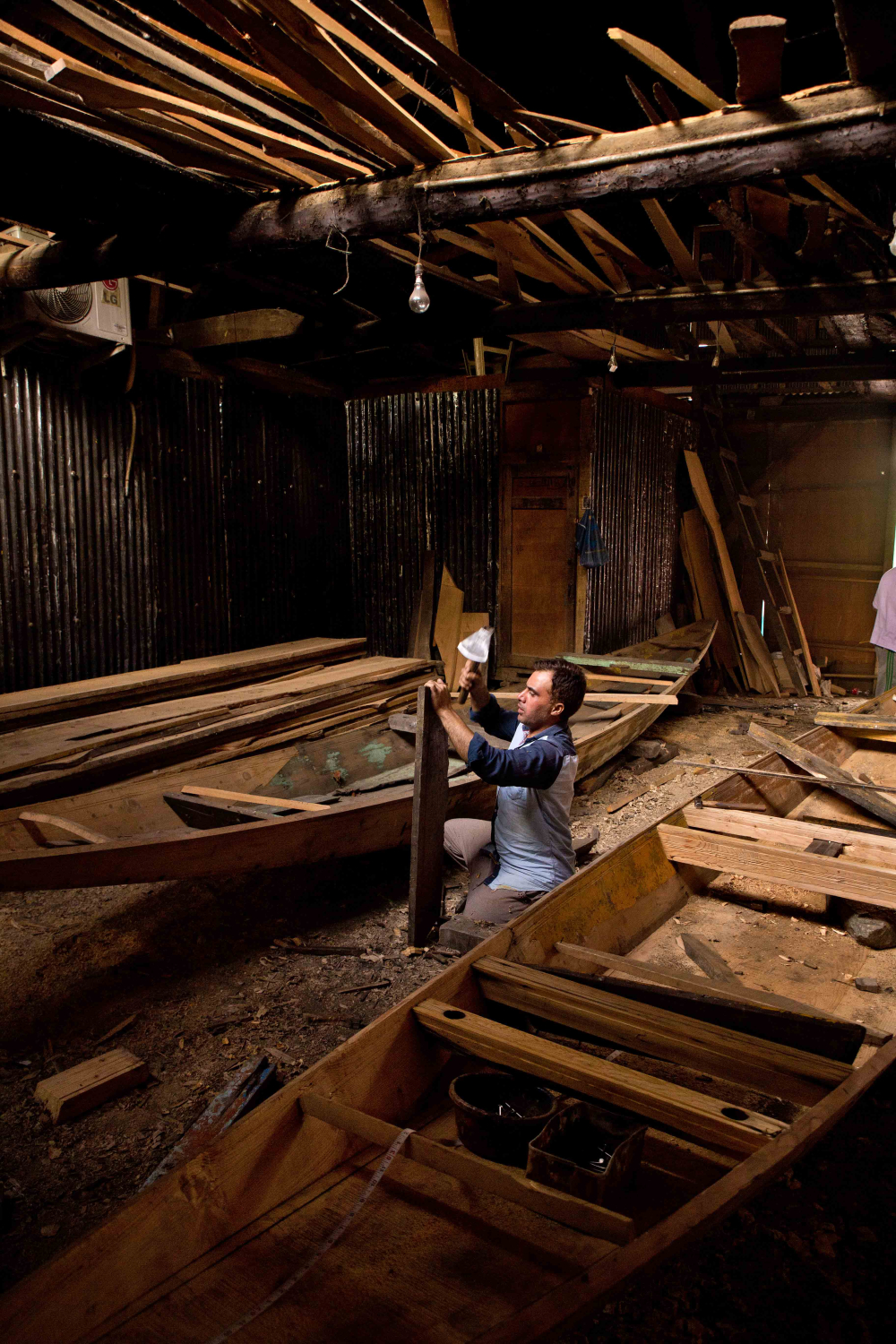
Craftsman crafting a shikara. (Picture Credits: Sharmistha Dutta)
Crafting houseboats and shikaras is a time-honoured skill passed down through generations. Made primarily from durable deodar wood, these boats are built to endure. Small workshops and factories scattered around the lake construct boats year-round. A shikara takes around 10 days to complete, selling for 1.5–2 lakh rupees, while a large houseboat, with seven to eight rooms, might require six months of labour and sell for 2–3 crores, depending on its amenities.
Dal Lake, with its scenic charm and socio-economic vibrancy, continues to shape the lives and livelihoods of those who inhabit its shores. A visit to this iconic waterbody offers a glimpse into a world where nature, culture and history coexist in harmonious rhythm.
This essay has been created as part of Sahapedia's My City My Heritage project, supported by the InterGlobe Foundation (IGF).
